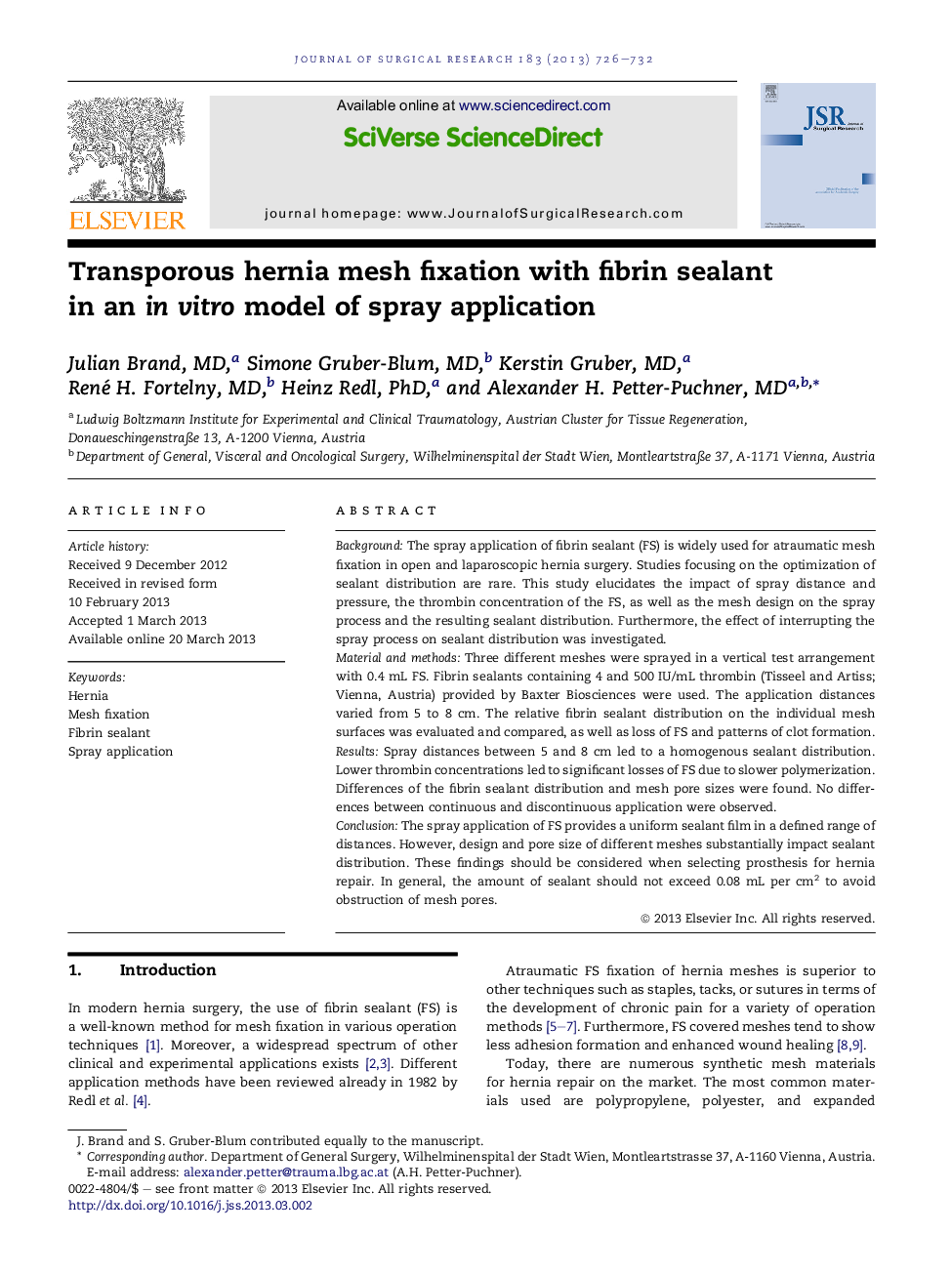| Article ID | Journal | Published Year | Pages | File Type |
|---|---|---|---|---|
| 4300885 | Journal of Surgical Research | 2013 | 7 Pages |
BackgroundThe spray application of fibrin sealant (FS) is widely used for atraumatic mesh fixation in open and laparoscopic hernia surgery. Studies focusing on the optimization of sealant distribution are rare. This study elucidates the impact of spray distance and pressure, the thrombin concentration of the FS, as well as the mesh design on the spray process and the resulting sealant distribution. Furthermore, the effect of interrupting the spray process on sealant distribution was investigated.Material and methodsThree different meshes were sprayed in a vertical test arrangement with 0.4 mL FS. Fibrin sealants containing 4 and 500 IU/mL thrombin (Tisseel and Artiss; Vienna, Austria) provided by Baxter Biosciences were used. The application distances varied from 5 to 8 cm. The relative fibrin sealant distribution on the individual mesh surfaces was evaluated and compared, as well as loss of FS and patterns of clot formation.ResultsSpray distances between 5 and 8 cm led to a homogenous sealant distribution. Lower thrombin concentrations led to significant losses of FS due to slower polymerization. Differences of the fibrin sealant distribution and mesh pore sizes were found. No differences between continuous and discontinuous application were observed.ConclusionThe spray application of FS provides a uniform sealant film in a defined range of distances. However, design and pore size of different meshes substantially impact sealant distribution. These findings should be considered when selecting prosthesis for hernia repair. In general, the amount of sealant should not exceed 0.08 mL per cm2 to avoid obstruction of mesh pores.
